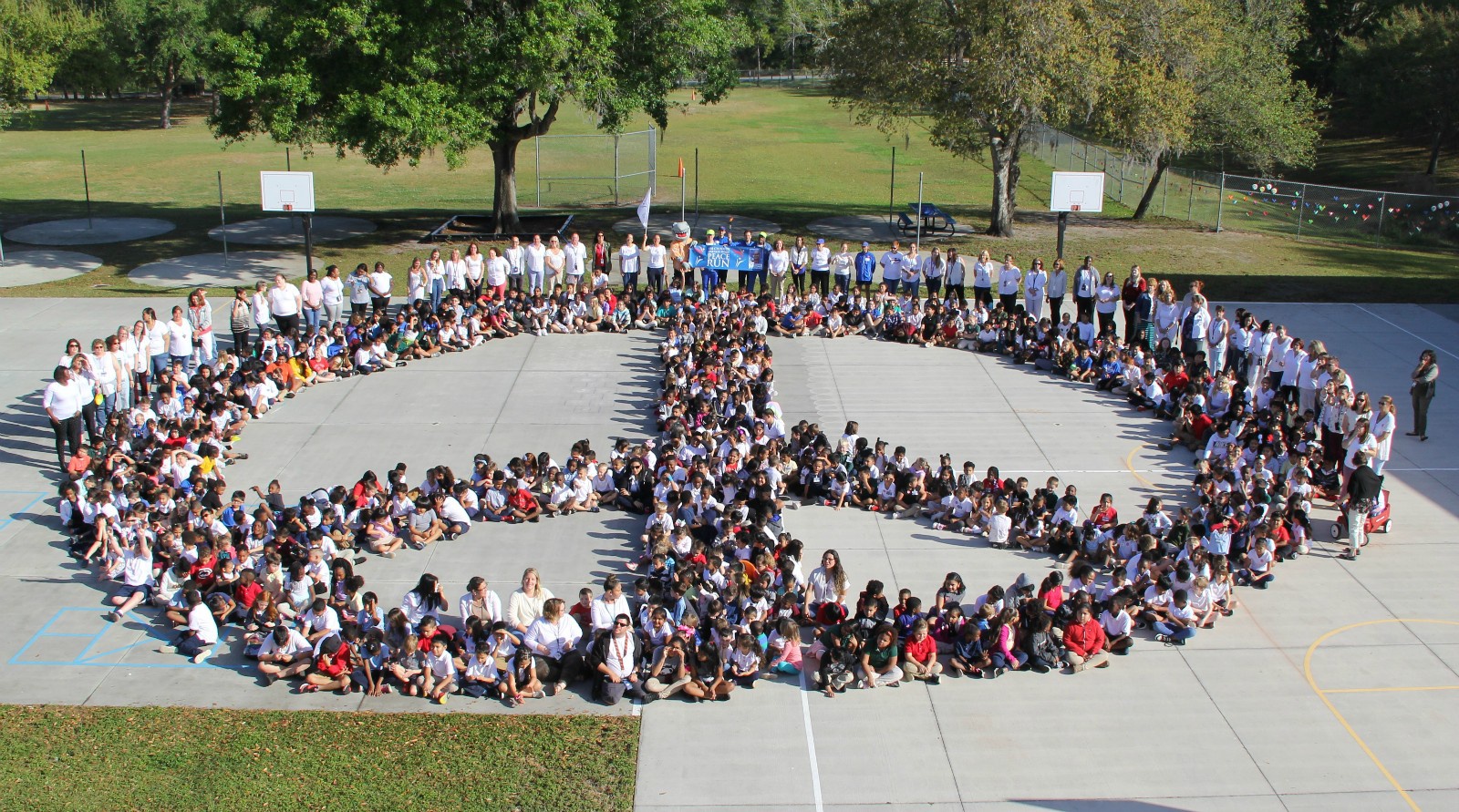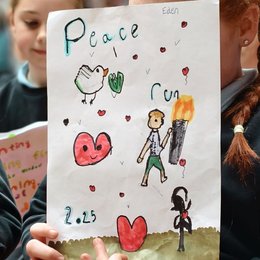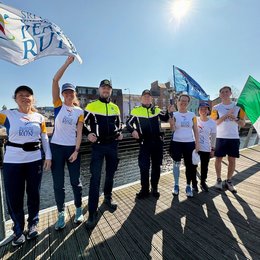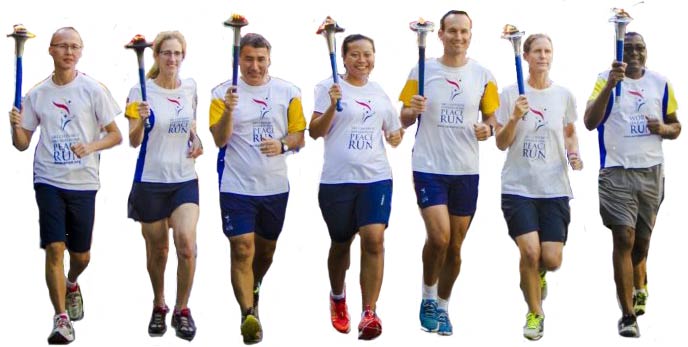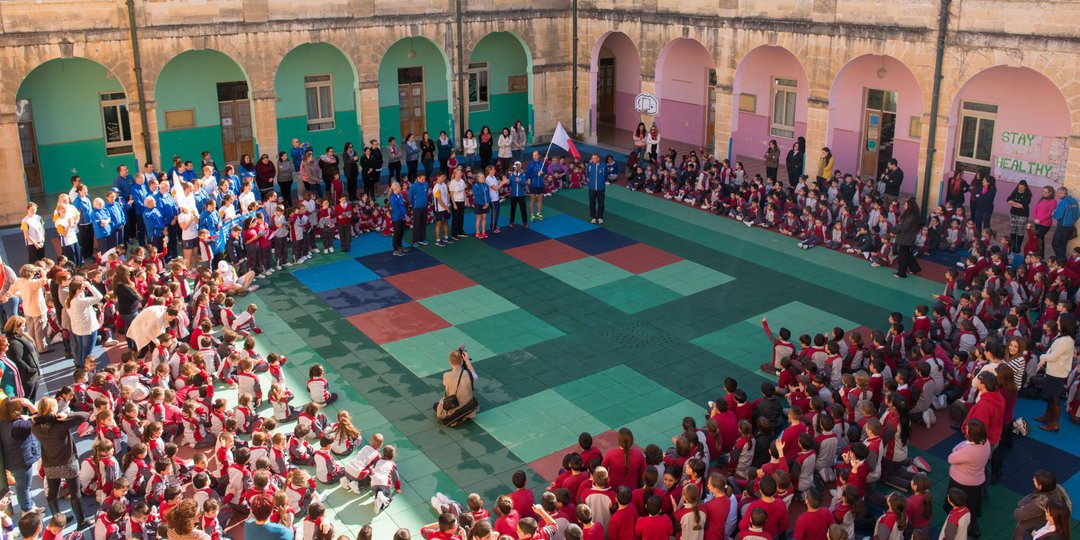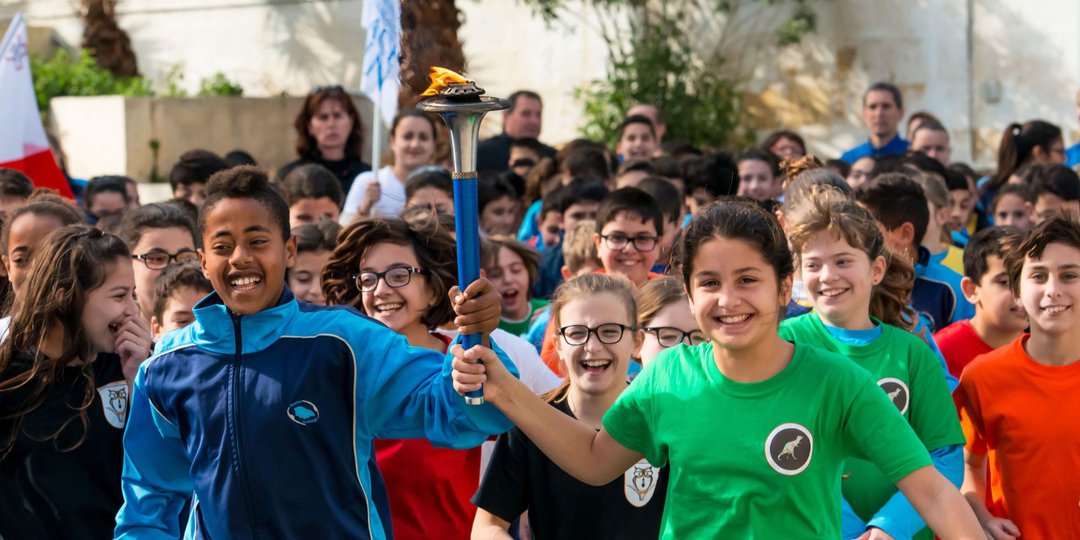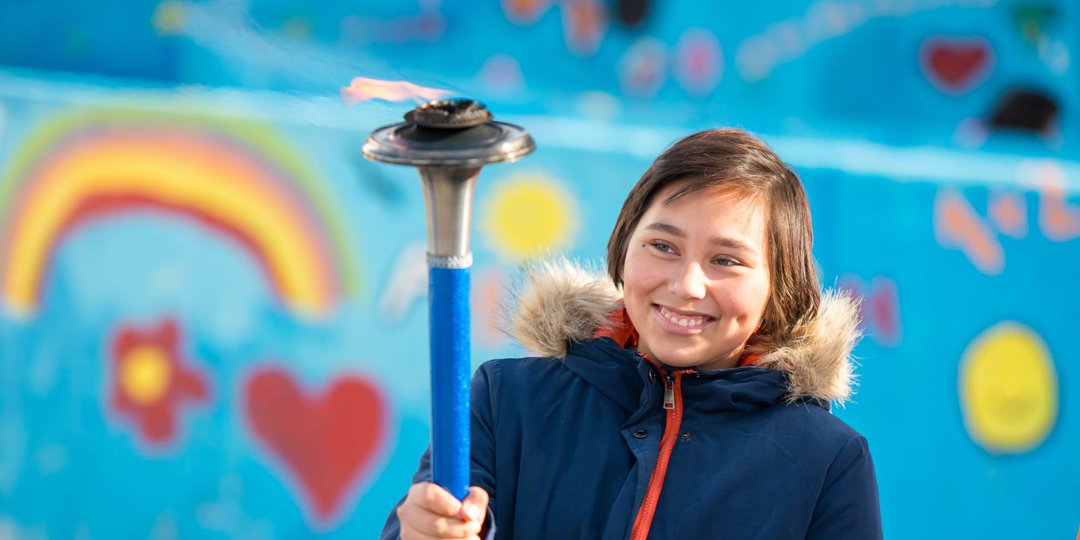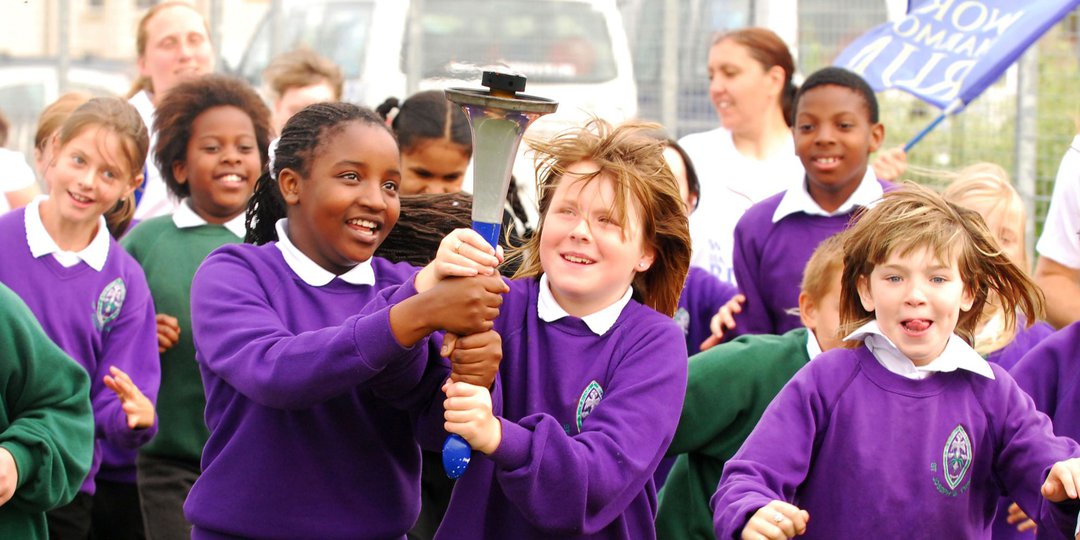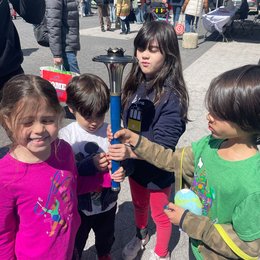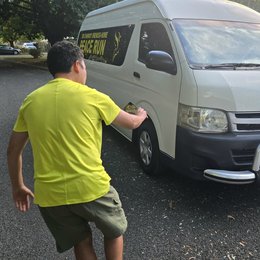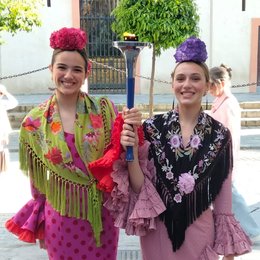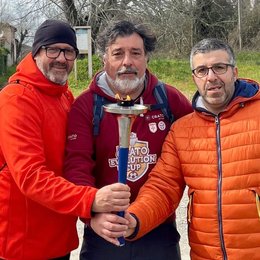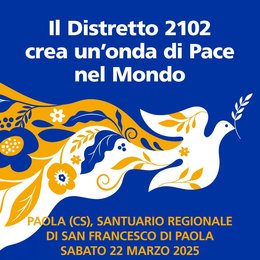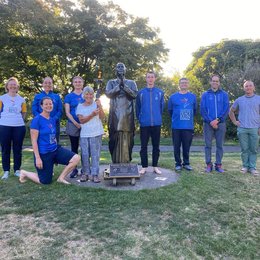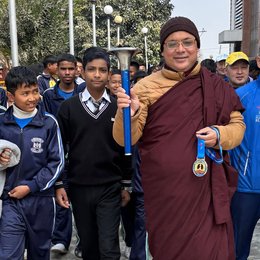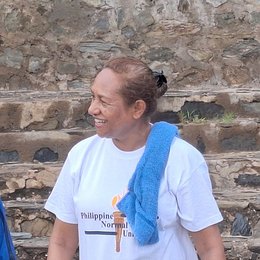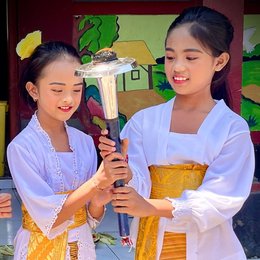Inspired by the message Peace begins with me! and a dynamic presentation that seeks to involve and educate children, more than 25,000 schools and youth groups around the world have welcomed the Peace Run.
What happens How to prepare Case studies
What happens when the Peace Run visits?
No two Peace Run ceremonies are ever the same, but here are some typical things that can happen:
- Children greet the Peace Runners’ arrival with large peace banners, drawings, paper peace doves and torches and other artwork for peace.
- Our international team gives a joyful and engaging presentation, that can involve games, theatrical skits and music, and is targeted towards the particular age group.
- During the ceremony children read essays, poems and messages they have written about peace, perform plays, play instruments, dance and sing.
- Where possible, we offer everyone a chance to hold the Peace Torch and to run with it.
- Usually the Peace Run stays no more than 45-60 minutes in any one place, but the spirit of the Peace Run and the experience of peace remain.
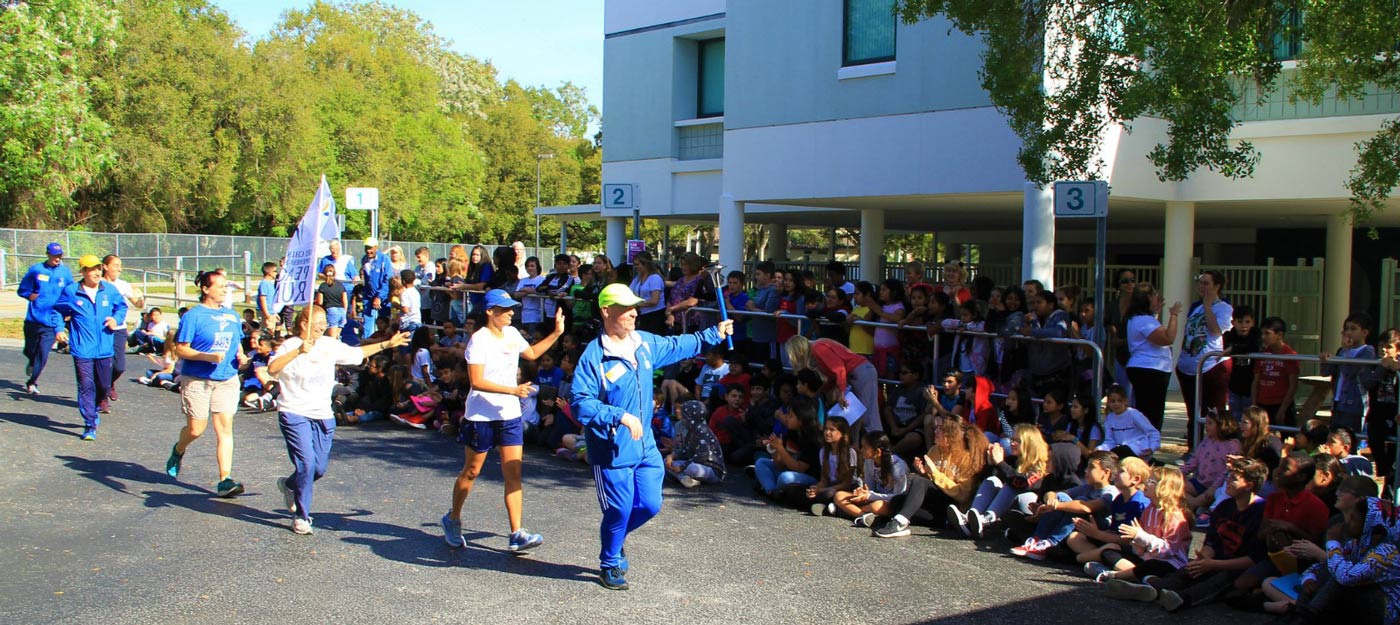
Preparing for the Peace Run
The more preparation you can do for a Peace Run event, the more everyone will get out out if it! To help, we've created a 1-page idea sheet for teachers, plus a handy checklist to prepare for upcoming visits.
Here are some things that people have done in the past:
Learning about the Peace Run
- Invite the children to follow the Peace Run's journey on a map. Even better: if you have a writable map, you could invite the children to draw the route with a red sharpie!
- Good questions to ask: Where will we begin and end? Where have we visited? How long do we run each day? - and most importantly: Why are we running?

Poetry, Writing and Artwork for Peace
- Encourage children to write down poetry, prayers, ideas, and art about world peace that can be read out and shared. Good topics are: What does peace mean to me? - How can I help make a more peaceful world? See artwork from other schools »
- Some schools have done a class art project, where each of the children contribute towards a larger artwork...
- You can display artwork in your school, or even publish in your school or city newspaper.
- And of course the Peace Runners would love to see them when they visit. And if we can't visit, then we would love to see everything anyway! If you think it appropriate, we can post the artwork and stories on our website for other children around the world to see and enjoy! Contact us and we'll work out the best way to make it happen.

Learning about countries
Invite students to choose a nation or a few nations, research that nation's culture and what it has done towards peace.
If you know the Peace Run is coming to your school, you can find out where the international runners come from, and maybe choose some of those countries to do a project on! Most of our runner bios are on our team page, and you can contact us to get an up-to-date list.
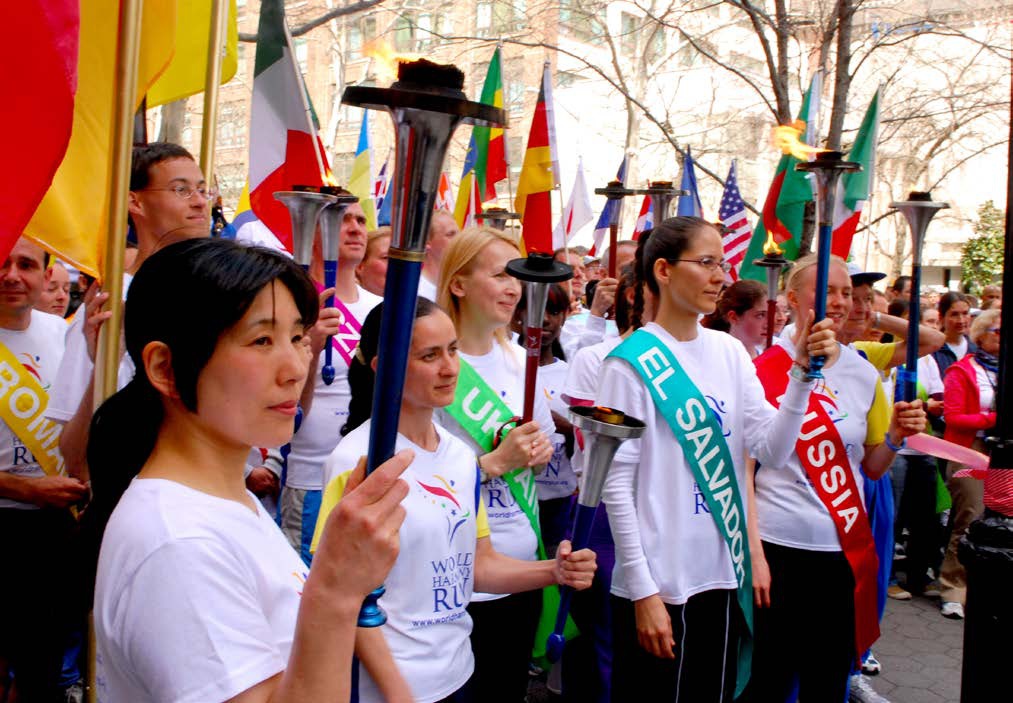
When the students select their country, here are some potential projects to work on:
- Investigate if the Peace Run has travelled through that country. When did we go there? Who did we meet? You can find a lot of information on our website - when we visit somewhere we always write a report about that day. Find a day or a meeting that really inspired you.
- The students could even contact a school in that country that has been a part of the Peace Run - contact us and we can definitely help with that part!
- Find traditional songs, costumes or games from that nation.
- When the Peace Run arrives, the students could present their work to the school and to the Peace Run Team, and also send to us to post on our website!
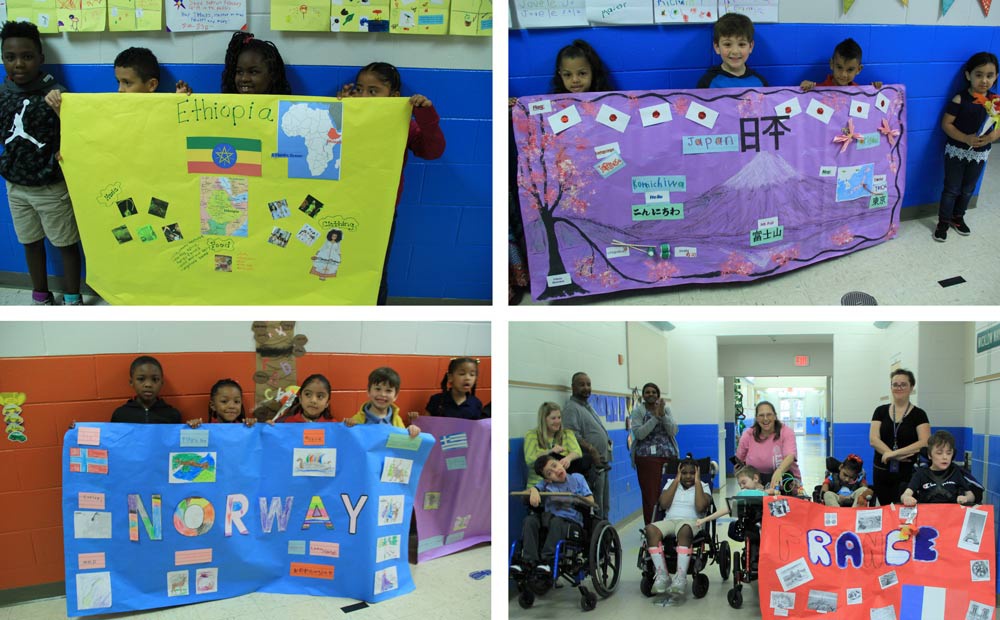
Students discover their Community
The Peace Run is all about discovering peace and goodness in the world around us, and it is a great opportunity to invite the students to think of the community around them, with the following questions:
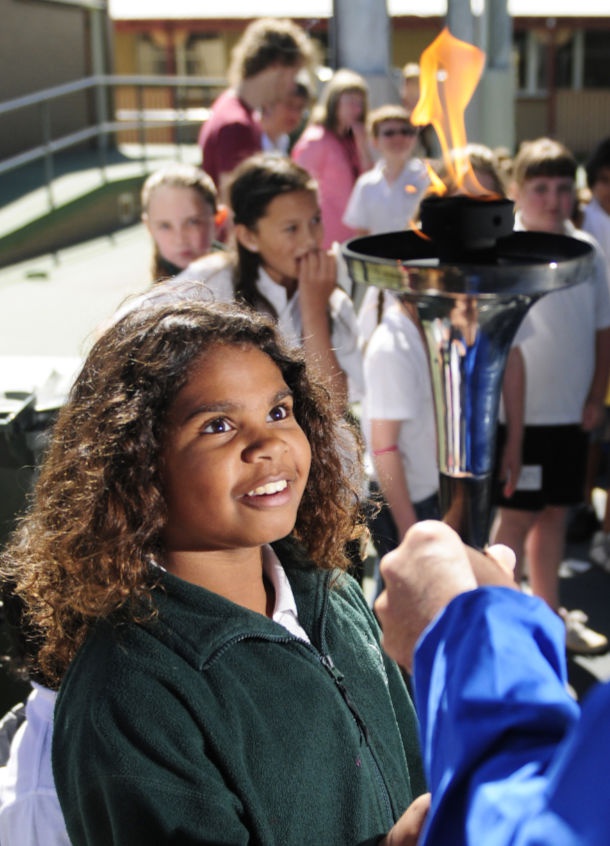 Is there someone in your community, or who you know, who really inspires you, as someone who is working towards a better world? Someone who makes people feel happier and better about themselves? Very often all we hear is the bad news in the world, and we don't see all the good things that people are doing. Or we take them for granted.
Is there someone in your community, or who you know, who really inspires you, as someone who is working towards a better world? Someone who makes people feel happier and better about themselves? Very often all we hear is the bad news in the world, and we don't see all the good things that people are doing. Or we take them for granted.
Maybe you can do a little report about them, or write a poem or artwork to them telling them how much you appreciate their efforts.- Maybe we can even present that person with our Torch Bearer Award! To find out about the Award and how you can nominate people, go to this page »
- What about your school? What projects do you have that foster friendship and oneness? What things bring happiness into your life?
- And what about you? Maybe you dont think about it very often, but there are probably quite a few people in your life - family and friends - that you yourself bring joy and happiness to! Just by being there for those people, you are already bringing peace and love into the world. When you realise the good things you are doing already, then you can try to do them even more!
We would love to hear about this when we come to your school!
What can I do for Peace?
Ask the students to look at their own lives and examine their interactions with people, family, school, community and the world at large. From this they will be able to find small ways in which they can make a difference in the world.
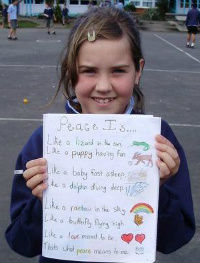 Use five minutes at the end of class to discuss one quality that makes your school a happy and peaceful place. Topics could include: Gratitude, Forgiveness, Empathy, Kindness, Selflessness, Encouragement, Benevolence, Tolerance, Goodwill, Honesty, Patience, Compassion, Integrity, Thoughtfulness...
Use five minutes at the end of class to discuss one quality that makes your school a happy and peaceful place. Topics could include: Gratitude, Forgiveness, Empathy, Kindness, Selflessness, Encouragement, Benevolence, Tolerance, Goodwill, Honesty, Patience, Compassion, Integrity, Thoughtfulness...- Ask the students to come up with seven ways to make the school a happy, peaceful place for everyone. Create an award for students who follow through and implement one of these ideas.
- Ask the students to make a Pledge for Peace. Each student can write down their pledges and present these to the Peace Run Team when they arrive at the school. Pledges can include things like: smiling more than frowning; visiting their neighbours; volunteering for the community...
Peace through Music
The Peace Runners would love to hear whatever performances of Peace-themed songs that your class or school choir would have to offer!
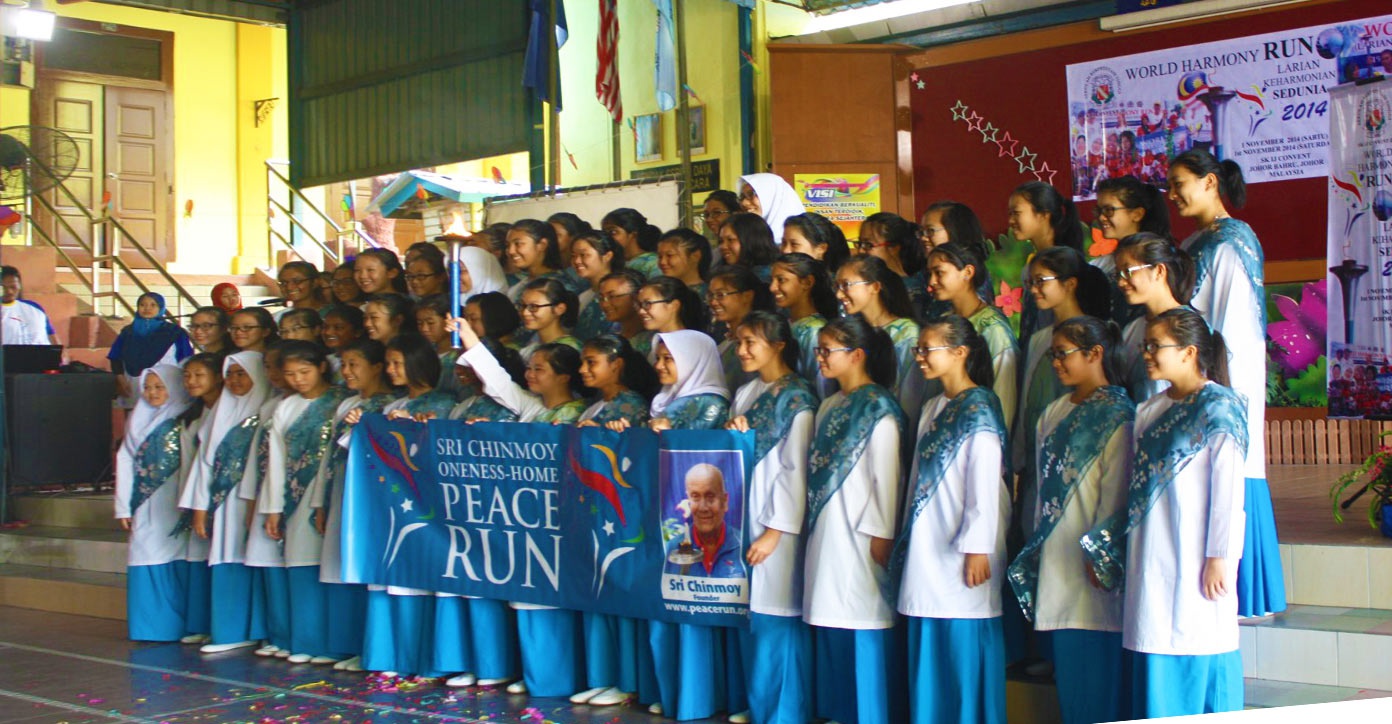
And if you would like, you could even perform our Peace Run and World Harmony Run songs by Sri Chinmoy. They are very joyful and dynamic and for the runners, they really embody the spirit of the Run.
The World Harmony Run song, by Sri Chinmoy
Cultivating a feeling of Peace
The Peace Run tries to cultivate a feeling inside each of us of friendship and oneness, a feeling that the world is one family. Here are a few exercises you can do with the class:
- What if there was Peace in the Whole World? You can take a short period of time with the class (30 seconds - 2 minutes)in silence, to imagine what it would be like if we lived as one world family. Imagine people in the whole world happy and helping each other. Imagine our whole planet as one big community, where each person is respected and appreciated.
-
A flame of Peace When you need the students to be calm and focused, take 30 seconds for a group activity: Ask them to close their eyes and imagine a tiny flame of peace—like the Peace Torch—inside the center of their chest. With a few deep breaths, they can expand that warm, glowing feeling—allowing it to spread throughout their whole being, into the classroom, and then out into the world.
- Music for Peace Invite the children to close their eyes and listen to some calm, inspiring music, then afterwards you can discuss how the music made them feel. We have some bulletpoints outlined on our Children page, that you might like to use as a template for the exercise.
-
An affirmation of Peace Take two minutes to discuss and repeat a positive affirmation. You could use some of the ones below:
“The only way to have a friend is to be one.” —Ralph Waldo Emerson
“We may encounter many defeats but we must not be defeated.” —Maya Angelou
“It always seems impossible until it’s done.” —Nelson Mandela
”It is better to light a candle than curse the darkness.” —Eleanor Roosevelt
“Whoever is happy will make others happy too.” —Anne Frank
”Let it be the time for us to dream of world-peace.” — Sri Chinmoy
Case study 1
Morano High School, Caivano, Naples province, Italy
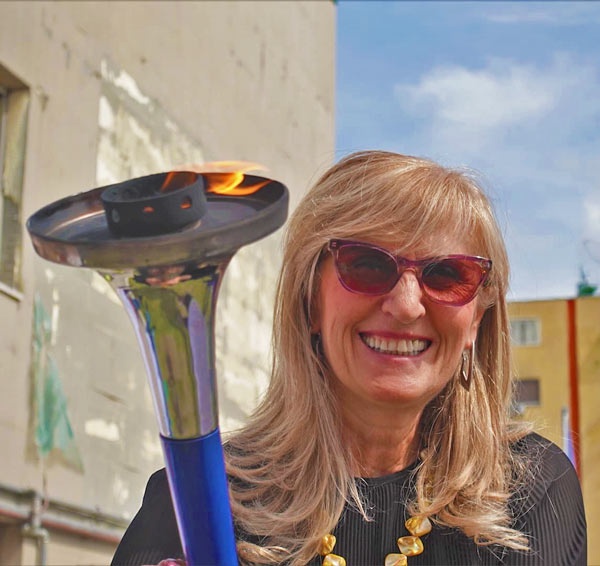 Eugenia Carfora
Eugenia Carfora
Head of the Morano High School in Caivano
Ms. Carfora, or “the Principal”, as the whole community calls her, has transformed the school from a dilapidated place in an area of low school attendance and high crime into a model institute in the education sector, giving the children a new possibility of a better life.
In 2016, I was contacted by the Peace Run, and was told they would be passing through the area and would like to visit our school. I liked the idea and was struck by the Peace Run’s approach to the ideal of peace and the possibility of giving the kids hope and a positive vision for the future. In this area (of Italy) children need to dream, to have a new horizon and to be able to imagine a different, better life.
The Morano High School is a vocational school, and together with the teachers we involved all the school departments - cooking, mechanical, etc. All worked together on the project for about six months. One department prepared sweets on the theme of peace, in particular “Peace Run cupcakes”. Another department used recycled materials to show that problems can be turned into resources, creating design objects, pieces of furniture, and even a wedding dress made from recycled paper!
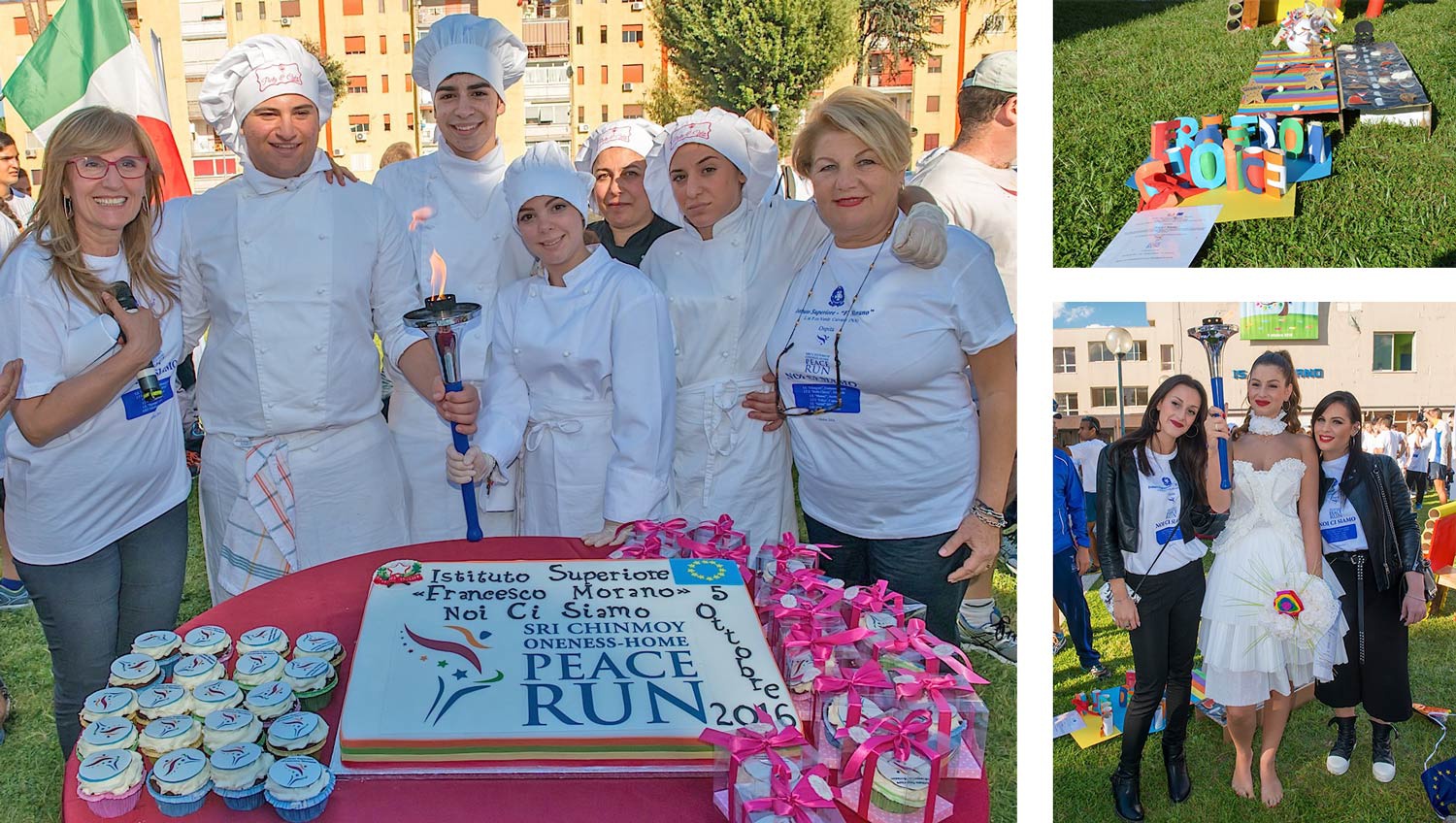
Also, we contacted a well-known Italian director and created a video on the theme of peace, showing how peace can be a value lived in everyday life by each student.
To welcome the Peace Runners, we celebrated a “Peace Run Day” where all the work done was presented to the runners. Peace‐drawings were created and music performances and poems performed on stage. A delegation of five hundred students from three other local schools was invited, involving a thousand students in total. Representatives of the local police and magistracy and of the national Ministry of Education took part in the event.

The collaboration with the Peace Run has become an ongoing partnership that involves students and teachers from various departments of the school. In the Peace Run I envisioned a further possibility for the students to use their positive potential, even in the face of the difficulties they may have to face in their everyday lives, especially when living in a difficult environment such as ours.
To me peace is to give children a light of hope in the dark, and that’s my ultimate goal.
In 2017, the Morano High School sent a delegation of one hundred students to Rome to provide catering for the opening ceremony of “Colours of Peace”, a large exhibition of over 7000 peace drawings from 39 countries, organised by the Peace Run to honour the UN International Day of Peace. The school also presented artworks for the exhibit, and assisted the Peace Run in launching the international PMA (Peace Movie Award) project.

Resources
Here are a few things that might be of use as you prepare your peace curriculum:
Useful Printouts
- Our 1 page guide for classroom ideas
- A checklist for school visits
- Our Peace Run brochure - this one is not so amenable to printing; if you feel having hard copies would be useful to you, please get in touch!
Peace in 35 Languages
| 1. Afrikaans: Vrede | 18. Thai: สันติภาพ (santipap) |
| 2. Aragonese: Patz | 19. Basque: Baké |
| 3. Arabic: سلام (salām) | 20. Persian/Farsi: صلح (solh) |
| 4. Haitian Creole: Lapè | 21. French: Paix |
| 5. Aymara: Hacaña | 22. Irish: Síocháin |
| 6. Bulgarian: Мир (mir) | 23. Manx: Shee |
| 7. Bengali: শান্তি (śānti) | 24. Hebrew: שלום (shalom) |
| 8. Tibetan: ཞི་བདེ (zhi-bde) | 25. Hindi: शांति (śānti) |
| 9. Catalan: Pau | 26. Igbo: Udo |
| 10. Chamorro: Minaggen | 27. Icelandic: Friður |
| 11. Cherokee: ᏙᎯᏱ (dohiyi) | 28. Japanese: 平和 (heiwa) |
| 12. Welsh: heddwch | 29. Maori: Rangima’arie, Nohopuku, Rongo |
| 13. Danish: Fred | 30. Dutch: Vrede |
| 14. German: Friede | 31. Polish: Pokój |
| 15. Greek: Ειρήνη (iríni) | 32. Russian: Мир (mir) |
| 16. Esperanto: Paco | 33. Scots: Pace |
| 17. Spanish: Paz | 34. Turkish: Barış |
| 35. Italian: Pace |
Torch as a Symbol
(from Wikipedia) The torch is a common emblem of both enlightenment and hope.
Thus the Statue of Liberty, actually entitled “Liberty Enlightening the World”, lifts her torch. Crossed reversed torches were signs of mourning that appear on Greek and Roman funerary monuments—a torch pointed downwards symbolizes death, while a torch held up symbolizes life, truth and the regenerative power of flame. In the seals of schools in the Philippines, the torch symbolizes the vision of education to provide enlightenment to all the students.
A torch carried in relay by cross-country runners is used to light the Olympic flame which burns without interruption until the end of the Games. These torches and the relay tradition were introduced in the 1936 Summer Olympics by Carl Diem, the chairman of the event, because during the duration of the Ancient Olympic Games in Olympia, a sacred flame burnt inside of the temple of Hera, kept in custody by her priestess.
